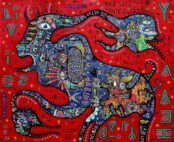The thematic reference to science and religion has been of growing significance in my art practice, I have explored this in various ways over the last couple of years concentrating on western Christianity and western modern sciences as immediate and authentic subjects in my own work; as a European artist working in a contemporary situation profoundly impacted by the reverberations of these bodies of thought.
Conflict and contradiction between these areas has been productive in developing works with an emphasis on meaning-making and iconoclasm as potentially twin functions of the artist as an interlocutor between science and religion. To speak at a basic level, religion is seen as a source of binding and meaning making and science is seen following sociologist Max Weber (1919) as fundamentally ‘irreligious’ ‘That science today is irreligious no one will doubt in his innermost being, even if he will not admit it to himself’ (Weber,1919:9).
This basic antagonism has been complicated in the practice by works responding to randomness and chance, especially creative, potentially proto-religious imagery emerging from scientific experiments such as Ernst Mach’s (1838-1916) pendulum wave experiment that resulted in the emergence of the Automatic Icon (2020) in a dynamic pose resembling a totemic deity (see fig:1).
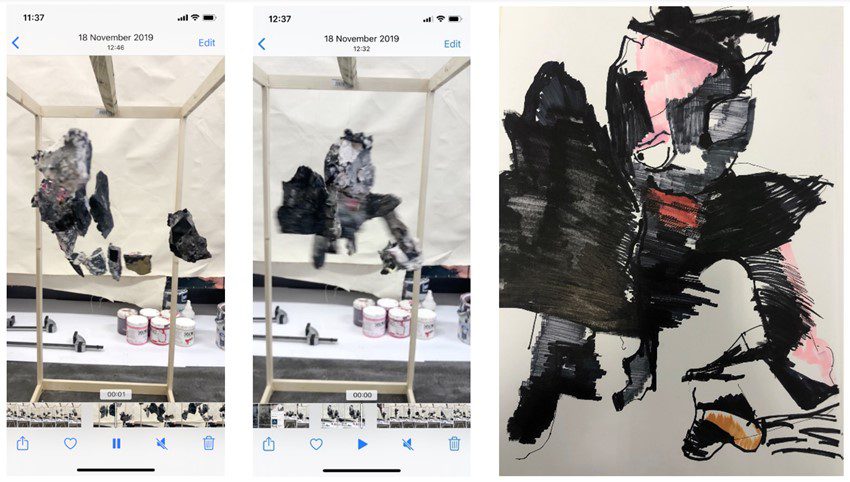
Fig 1: Pendulum Wave Experiment video snapshots (left) and subsequent drawing (2020).
This was a conscious attempt to utilise scientific and creative practice framed by religious imagery to create work, this involved the use of the science experiment with its reference to predictable patterns combined with imperfect making processes and the inclusion of chance to generate a process which was intended as the work; the subsequent emergence of the figure was not planned or expected but its embellishment in the art practice emulates the creation of meaning observed in religious practice through ritual, creation of artefacts and narrativization.
Understanding the position of sociologist Max Weber (1919) is useful in grasping what the practice seeks to update, that being the concepts of enchantment and disenchantment in relation to bodies of knowledge and to works of art, subsequently to a potentially upgraded role for the artist,
The fate of our times is characterized by rationalization and intellectualization and, above all, by the ‘disenchantment of the world.’ Precisely the ultimate and most sublime values have retreated from public life either into the transcendental realm of mystic life or into the brotherliness of direct and personal human relations (Weber, 1919:16).
Weber goes on to caution against the invention of ‘new religions’ or ‘monumental styles’ to solve the problems created by the diminishing status of the grand narratives of western civilisation, for Weber inauthentic attempts can only offer worse results than the disenchantment itself and as Michael Saler (2020) professor of history informs us, Weber ‘upheld and felt he needed to defend against late nineteenth-century “irrationalist” currents such as lebensphilosophie and aestheticism’ (2020). Saler is useful in updating this dynamic and understanding its contemporary iteration since Weber was writing in the early 20th century,
Weber’s formulation thus pervaded the social sciences and humanities through the late twentieth century. For all the deconstructive challenges to it by postmodernists, the paradigm remained the reigning understanding of modernity within the academy until the past two decades, when scholars from multiple disciplines began to question the nature and extent of modern disenchantment, and how it related to concepts of enchantment and re-enchantment (Saler, 2020).
For Saler there is a contemporary need and tendency to move away from this opposition towards a more integrated expression of the qualities science and religion offer society. It is this shift which opens a renewed and important role for creative practitioners,
In place of Weber’s binary opposition between rational, modern disenchantment and irrational, atavistic enchantment, these scholars stress the complementary interplay between disenchantment and enchantment (Saler, 2020).
By way of the American novelist and essayist F. Scott Fitzgerald Saler emphasizes ‘double consciousness’ and nuanced thinking,
The ability to hold two opposed ideas in the mind at the same time, and still retain the ability to function.” “Enchantment” has long had the dual meanings of “to delight” and “to delude”; while Weber stressed delusive enchantments, recent scholarship has focused on “disenchanted enchantments,” which ideally delight without deluding (Saler, 2020).
What Saler describes here is a more fluid and dynamic relationship between enchantment and disenchantment or ‘delusive’ and non-delusive cultural products. His examples include scientific programming and projects that employ a creative or artistic presentation, that have inspirational or ennobling (in relation to humanity) framing. This he attributes to the renewed enthusiasm for the imagination as a vehicle for ‘delight’ as opposed to the disenchantment associated with scientific rendering of human existence,
Perhaps the most remarkable revision to a paradigm devoted to rationalization has to do with a new appraisal of the imagination as reason’s coequal…alongside the expansion of mass culture and the turn to art as a locus of spiritual replenishment, refocused attention on the imagination as reason’s partner (Saler, 2020).
While Saler is not concerned necessarily with the role of the artist in contemporary society he comes close to a justification of the creative as the vehicle for this duality between enchantment and disenchantment referring to Andre Breton (founder of Surrealism) Saler again emphasises imagination ‘He speculated hopefully that, “the imagination is perhaps on the point of reasserting itself, of reclaiming its rights”’ (2020). The assertion here is that the artists practice is already a paradoxical one that necessarily involves ‘delusive’ elements, for example to remain with painting, the creation of works that are decorative, or illusory (in presenting space) or dramatic and simultaneously though the artist’s work can be critical, exposing and/or may be outright attacks on certain values or on other epochs and artworks.
These are all presented as art, be it in public or in the gallery and therefore the artifice of the artist is foregrounded. Even the most potent trompe-l’œil used in painting does not really delude the onlooker into thinking they stand with Christ, or on an actual precipice, (thinking here of The Incredulity of Saint Thomas (1601–1602) by Caravaggio, and Wanderer above the Sea of Fog (1818) by Caspar David Friedrich) they require the conscious participation of the viewer, activation by the imagination of the onlooker. The tendency to ‘delight without deluding’ (Saler, 2020) then is a quality of art practice.
Practical Outcomes & Methods
In my most recent paintings I have looked to create works that blend qualities of science with those of religious artworks adopting the nuanced position described above and using a scientific methodology; moving from the ‘experiment’ as a framing device and influence on methods to utilising the methods, ephemera, techniques and archival practices in archaeology. This has been a natural progression having explored the studio as an archaeological site in relation to contemporary artist Sterling Ruby in the article Jetztzeit in the Context of The Studio: where is there agency in artistic practice? (See gagosianviewingroom.com, 2019; Louisiana Channel, 2016; Frieze 2019 and gagosianviewingroom.com, 2019).
Archaeological Allusions
This process is first spatial involving a movement to the outside (see fig2) and then a movement inside (see fig3) where assembly, labelling and general refinement take place. Firstly the outside space representing the ‘test dig’ in archaeology is where sites are marked out and artefacts are excavated, in this instance the outside space is not simply performative it provided the opportunity to gather found objects from the surrounding area which included a bird skeleton, selections of rock formations and sections of rotting wood as well as mechanical objects taken from an abandoned and ruined caravan, some of these artefacts even required partial digging up and were brought into a more controlled outside space where pouring large quantities of paint and construction took place.
These objects have been extremely significant in what I’m calling paintings, a combination of assemblage, painting and construction, the term ‘painting’ is retained as paint is used, paintings inform the three works, and the mode of the triptych is utilised in display, itself influenced by religious painting ‘Originally used as altarpieces In the early Cristian churches, triptychs pictured biblical stories and scenes through the use of symbolism’ (Lundburg, 1964:1).

Fig 2: Images above show the ground of outside space emulating the ‘test dig’ and ‘excavation’ aspect of archaeology (see methods table).
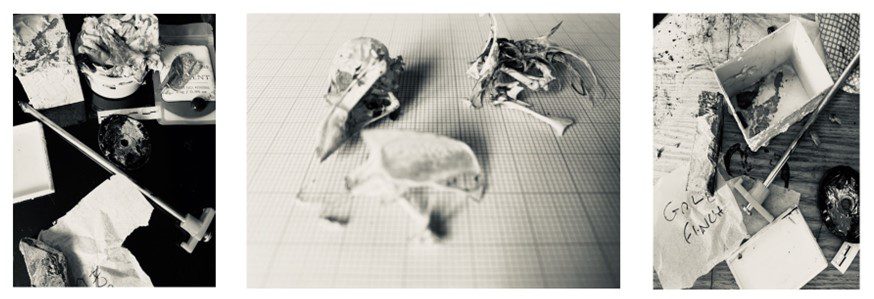
Fig 3: Images above show the sorting and labelling of found objects ‘grouping/ Sorting and Marking Artefacts/Analysis and Interpretation’ referred to in the table overleaf (see the methods table).
A rudimentary understanding of archaeological methods (see Aaron, 2014 and Archaeological Process, 2020) produces the following stages used here to blend with the existing art practice (see figure 4 below).
| Survey This first stage is described above in reference to exploring the surrounding area and immediate outside areas, collecting artefacts including man-made objects and natural materials. | ‘…sites can also be located through field surveys (walking across the ground looking for artifacts). Sometimes sites are discovered by chance by home-owners who find artifacts, building foundations, abandoned wells or privies in basements and backyards’ (Archaeological Process, 2020) |
| Excavation This is represented in the practice in the finding and digging up of remains and objects as well as in the painting method later used this consists of pouring plaster and paint into the container that represents ‘a segment of time’ (see opposite) digging into the assemblages to reveal the embedded objects and materials. | ‘Each layer represents a segment of time, much like a timeline. Archaeologists also encounter features while they are digging. Features are areas that appear different from the surrounding soil because the ground was disturbed in the past’ (Archaeological Process, 2020) ‘After archaeologists have excavated the site completely, or to the extent the project planned, they fill the site back in and take the artefacts to be analysed’ (Aaron, 2014) |
| Grouping/ Sorting and Marking Artefacts/Analysis and Interpretation This is represented in practice by the move inside were the processes and materials gathered and assembled outside are brought for ordering and assemblage at the display table this includes some labelling and grouping according to the resonance with the chosen historical works. | ‘When dry, the artefacts are sorted within each provenience into categories such as ceramics, glass, structural material (window glass, nails), miscellaneous (buttons, pipes, toys), organic artefacts (cloth and leather), bone, shell and seeds’ (Archaeological Process, 2020) |
| Display/ collection This is reflected in the display in excavated containers and coverings of Perspex which protect the contents but which also add to the aura of the objects inside being precious. | ‘The artefacts are stored in appropriate bags, boxes and other storage materials, and in a storage facility with a stabile climate, in order to ensure their long-term preservation’ (Archaeological Process, 2020) |
Fig 4: Methods Table (2020) showing simple Archaeological processes utilised in the practice.
Religious Allusions
Religiosity in the practice is represented in reference to renaissance works: St. Francis of Assisi Receiving the Stigmata (fig 5) by Giotto (c. 1295–1300); Madonna of the Goldfinch (fig 6 ) by Raphael (c. 1505–1506) and The Virgin in Prayer (fig 7) by Sassoferrato (c. 1640-50). Each of these paintings depict highly religious scenes and employ artistic methods in choice of material and composition that support symbolically the spiritual aspects of the figures referenced.
The paintings are selected from a period where religiosity and technological-scientific advancement were both imbued with great energy they represent examples from the beginning the middle and the end of the overall period of the renaissance widely regarded as occurring between 1300 – 1600 and taking into account that ‘Many historians assert that it started earlier or ended later, depending on the country.’ (Szalay, 2016) see also Denys Hay in The Italian Renaissance in Its Historical Background (1999:1) who has it between ‘1350-1700’ the selection represents the early (perhaps immediate antecedent) to late period. The paintings represent various actions, prayer, display of stigmata and tactile interaction between man and animal which foreshadows crucifixion.
Furthermore, existing religious resonances in my work are employed by use of the triptych ‘Triptych is any painted picture, carving, sculpture, or work of art on three panels side by side’ (Lundburg, 1964:5) The triptych as a presentation device has a long historical reference its meaning and spiritual symbolism sets up a tension with the overt assemblage aspects that bring archaeological techniques to mind via use of specific equipment and processes described in figure 4.
In each chosen example I have decided to focus discussion on aspects of the physical materiality of the work, since in my own responses the materiality is foregrounded; in St. Francis of Assisi Receiving the Stigmata (fig 5) it’s the materiality of the man depicted his clear wounds a mark of reality, in Madonna of the Goldfinch (fig 6) it’s the materiality of touch between mother and child and children to animal, finally in The Virgin in Prayer (fig 7) it’s the materiality of the rock used as source and inspiration for a colour with spiritual associations.
The Spectacle of Authenticity
St. Francis of Assisi Receiving the Stigmata by Giotto (c. 1295–1300) depicts the first stigmata of the Christian religion. It combines references to different periods and combines flat and perspectival space. St. Francis as a subject matter has a highly ‘meta’ status since the Saint is seen as an embodied representation, that himself (as a symbol) questioned the distinction between symbolism and reality; blurring through the material reality of the wounds experienced and depicted in works (taboo at the time) questioned the boundary between ‘…the symbolic and the real’ (Salvati, 2005:163). For Salvati the depiction of the stigmata is intended to ‘rekindle devotion’ via a significant penetrating emotional response from otherwise ‘hardened hearts’ (166). Francis is furthermore himself a living portrait, rendered by Christ ‘…the physicality of Francis wounds, the fact they made Francis the painting, the portrait, the artefact created by Christ himself’ (162) as a display of ultimate empathy with Christ’s suffering the stigmata is a familiar concept but the idea that ‘Francis did not so much pray as become himself a prayer…’ (166) is the ultimate gesture of identification regarding authenticity. This makes Giotto’s image not simply an image of a visitation of Christ as seraphim on the saint but of the artist Christ making a living portrait out of the saint. Identification here appears circular, in Giotto’s work the saint looks up displaying his physical devotion to God (the idea or ideal) while God embodies himself in the body of the saint this mirrors Giotto’s devotional gesture in Francis depiction in a relationship with his audience in whom the work is activated by their emotional responses.
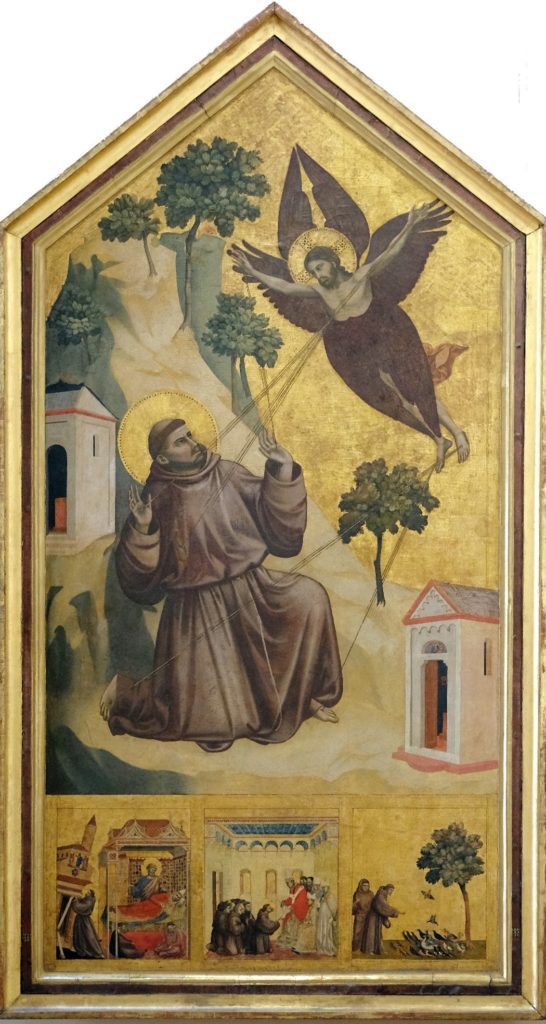
Fig 5: St. Francis of Assisi Receiving the Stigmata by Giotto (c. 1295–1300);
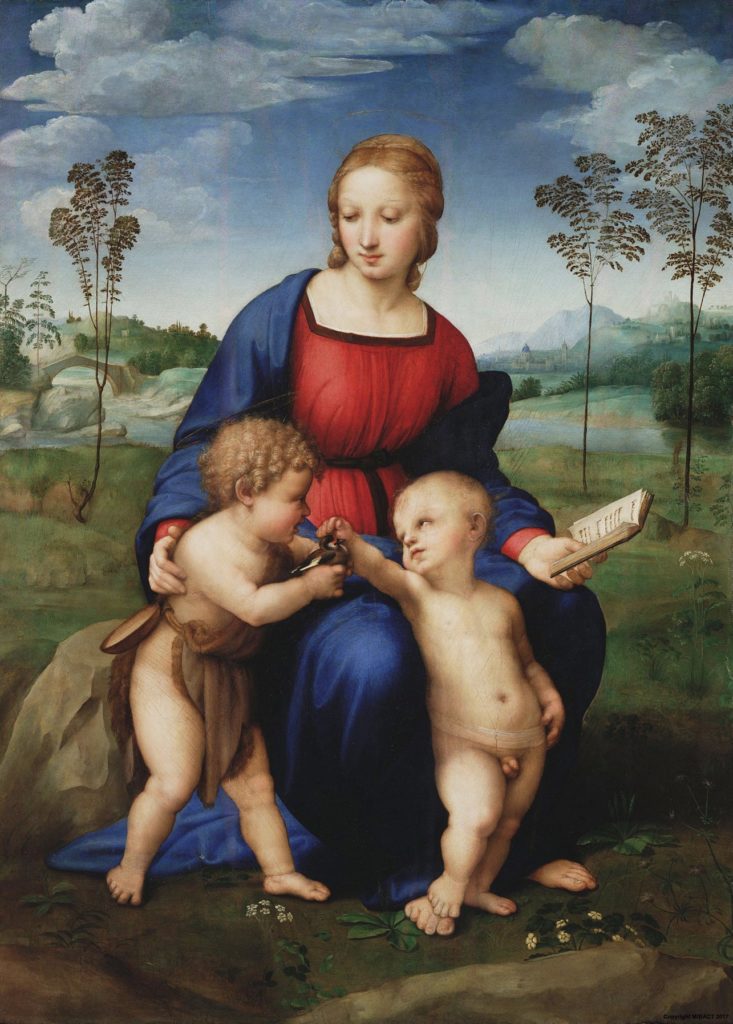
Fig 6: Madonna of the Goldfinch by Raphael (c. 1505–1506)
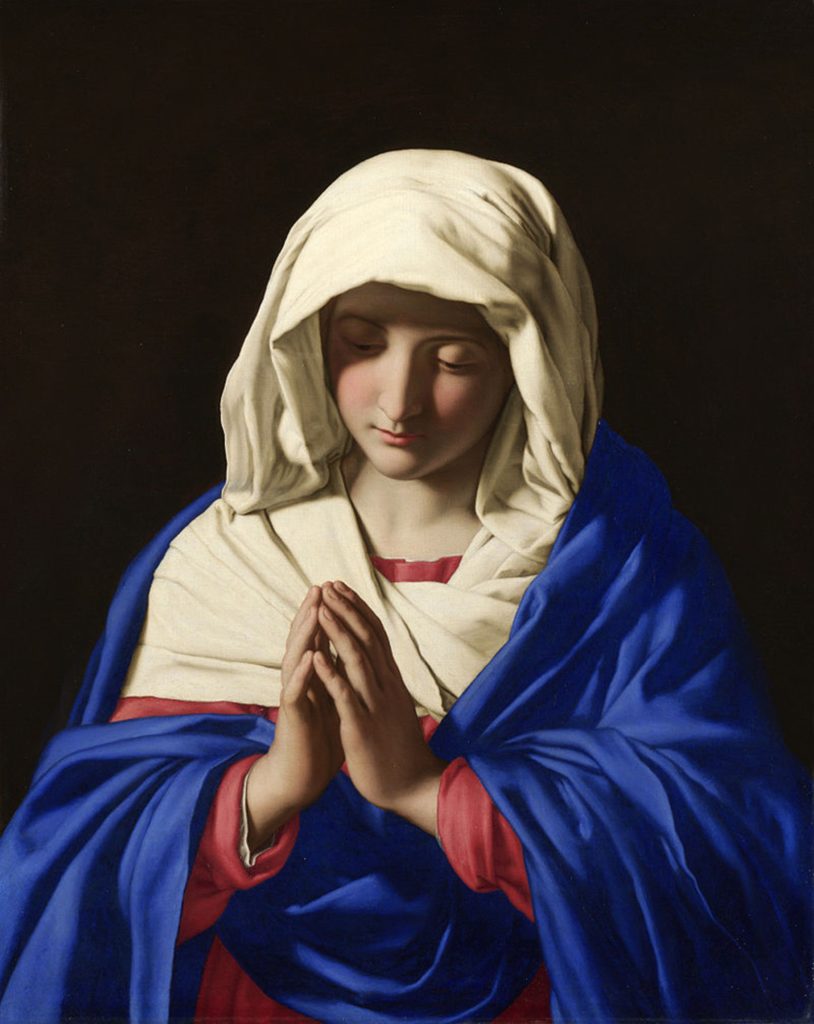
Fig 7: The Virgin in Prayer by Sassoferrato (c. 1640-50).
Circular Time in the Goldfinch
Madonna of the Goldfinch by Raphael (c. 1505–1506) has at its centre a moment of tactility between the Christ child and a goldfinch, this moment representing present time, newness in touch is interestingly contradicted by a sudden flash forward in the symbolism of the goldfinch, making a memento-mori of the otherwise innocuous setting. The symbolism is confirmed as a foreshadowing the crucifixion (see Impelluso, 2004:318). The tradition has it that a thorn from the crown at Jesus head while on the cross is plucked out by a passing goldfinch and a drop of blood splashes onto the birds head causing the red dot peculiar to the goldfinch type. This foreshadowing creates a tension since the painting otherwise portrays a tender moment as the other child (John the Baptist) shows Christ the bird in a tranquil setting, Fant (2015) points out that the intimacy is increased by Raphael,
Raphael goes to the next level and adds another level of emotions with the addition of John the Baptist showing Christ the gold finch. The gold finch is a symbol of Christ’s death on the cross so the Christ figure in the painting retreating into his mother’s clothing makes sense (Stokstad, Cothren 330). Christ even has his foot placed on the Virgin Mary’s foot, which is a subtle but very intimate symbol of mother child connection. (Fant, 2015).
the image has had a troubled existence falling apart on numerous occasions (Falvo, 2014:707; Fant, 2015) and its repair and restoration have been the subject of a study which aims to connect the audience to the work through its materiality ‘The project proposes a “magic box” in which large-format high-definition images of Raphael’s Madonna of the Goldfinch are projected, making it possible to penetrate the painting while also revealing the recent restoration process’ (706).
Prayer & Contemplation in Solid Rock
The materiality of the colour in Sassoferrato’s The Virgin in Prayer (1640–50 fig7) utilising lapis lazuli is as important as the demeanour and pose of the Madonna depicted, its use (lapis) is confirmed in de Roo (2004) who establishes in her study that ‘Ultramarine pigment is derived from Lapis lazuli’ (11) and further that ‘…the use of expensive blue pigment for the depiction of important figures continued as is evident in The Virgin in Prayer by Giovanni Battista Salvi ‘Sassoferrato’ …which both contain costly ultramarine’ (de Roo, 2004:18). The painting is often evoked as an example of the effective use of the colour; Don Emerson (2015) geophysical consultant uses The Virgin in Prayer as a prime example of the use of Lapis in painting (68) confirming the importance of the substance and its specific material qualities,
This medieval paint pigment was so scarce that it was more valued than gold. The deep blue of ultramarine was, and still is, fairly cheaply synthesised or imitated by various techniques. However, none can match the subtly impressive character of natural ultramarine with its virtually ineradicable content of associated minerals (see Table 1) interacting in nuanced plays of light that delight the viewer. Some connoisseurs consider its effects to be perfect, unsurpassed by any other colour or hue. This priceless pigment was often rationed to parts of a painting, such as the robes of the Virgin Mary (66)
Material scarcity confirmed in Ball ‘Blue is dominated by ultramarine, made from the mineral lapis lazuli, of which the only source for centuries was the remote mines of Badakhshan in Afghanistan. Its exorbitant cost meant it was reserved for the holiest parts of an altarpiece: the robes of the Virgin. (2014:122). The exoticism and scarcity may have guaranteed the price at the time but the lasting resonance of the colour is its spiritual association built up via is use in images of the Madonna and in Christian symbolism and myth, ‘Lapis features in the Christian Bible as a precious item prominent in priestly and divine functions’ (65) while gold has retained its economic significance the vivid colour and accumulated meaning connected to lapis is of interest here. The Virgin in Prayer (1640–50) featured in, Making Colour at the National Gallery in 2014 (see The National Gallery, 2020) referring to the exhibition Ball explains that the exhibition and paintings like The Virgin in Prayer help to foreground materiality of painting practice,
Mostly, we like our art organised by personalities, periods, themes—all perfectly valid points of entry, but all sidestepping the obvious consideration that painting is constructed from raw materials. So, there is something provocative about this exhibition’s juxtaposition of reverent depictions of madonnas and saints with the lumps of coloured rock from which they were made (Ball, 2014:122)
Confirming ‘the complementary interplay between disenchantment and enchantment’ that Saler, (2020) discussed in relation to the sciences and arts Ball highlights, as the exhibition itself does ‘an artistic and scientific voyage’ (The National Gallery, 2020) further highlighting this in relation to a regular participatory event at the exhibition ‘But colour is ultimately not in the substance—it is in the mind…visitors are invited to take part in an experiment on colour perception devised by neuroscientists’ (Ball, 2014:122). These factors question the rock and colour as a vehicle for the Madonna and suggest that the Madonna may be a way to highlight the spirituality of the rock. Consider Serenella Sessin (2014) study, Gems in Renaissance Material Culture
The connection between magic and stones was instigated in particular by the ideas of Microcosm and Macrocosm; in short what is above (in the sky) is reflected below (on Earth). Thus, the stars influence men and their lives, but also anything was present on Earth, including stones. Hence, stones were ruled by specific planets and were given a magic power through this association (Sessin, 2014:10).
Presentation of Responses to the Three Works
Overleaf are the three responses produced according to the methods and themes discussed thus far. Equipment used includes; paint and plaster mix, acrylic paint, bitumen paint, oxide powders, gold leaf, as well as found and sourced objects such as lapis rock, found rocks, skeletal remains and mechanical parts. The making process consists of careful assemblage and painting combined with pouring and excavation of embedded objects. Attempts have been made to establish compositional, material or colour analogies with the original works while emphasising the materials used and foregrounding the process.
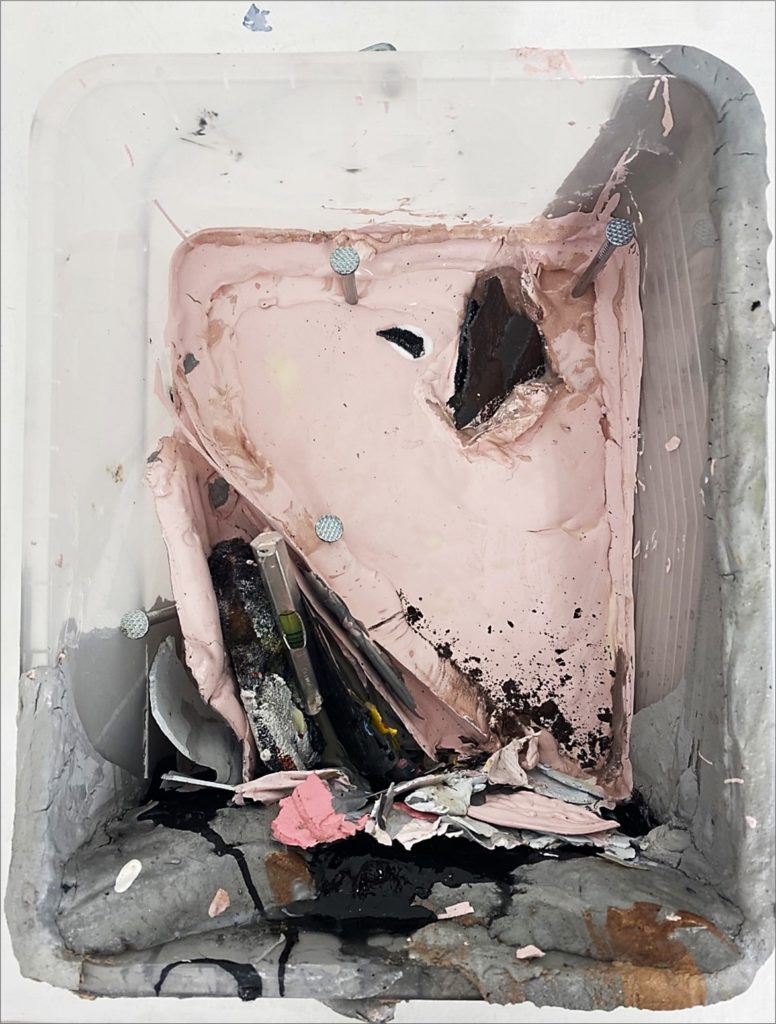
Fig 8: Painting response to St. Francis of Assisi Receiving the Stigmata (2020), iron oxide crystal, plaster and paint with spirit level and large nails.

Fig 9: Painting response to Madonna of the Goldfinch (2020), bird skeleton, archaeological pegs, plaster and paint with found metal parts.
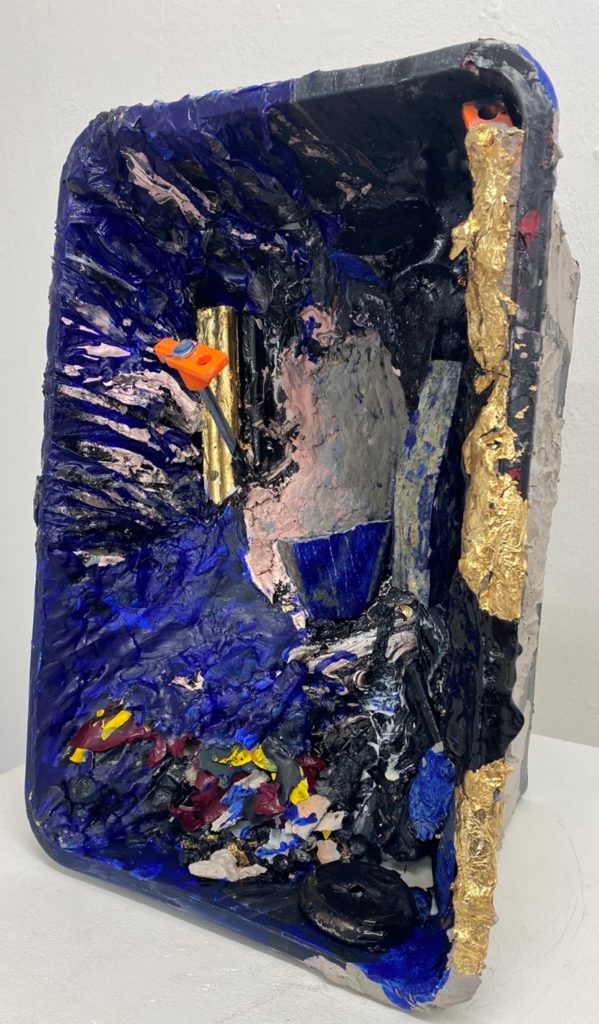
Fig 10: Painting response to The Virgin in Prayer (2020) lapis stone, gold leaf with archaeological pegs and excavated frame.
The responses that I have made are attempts to ‘delight without deluding’, to eliminate the ‘binary opposition between ‘atavistic enchantment’ and ‘modern disenchantment’ as discussed previously in relation to Saler (2020) with this in mind archaeological and religious references have been blended to create hybrid works. The delivery that I employed is not immediately ‘delusive’, materiality is highlighted in the poured paint, in the collected and sourced rocks, and in the clear evidence of the history of making which remains in the works.
The framing device of the archaeological methods and equipment as representing science itself has symbolic resonances to match those discussed in relation to religion, for example; the gathering up, care for and preservation of history, all aspects of archaeology. While each painting (fig; 8;9;10) presents as a robust object that flaunts the base actuality of source materials such as; paint, plaster, gold leaf, rocks, metal, lapis, and skeletal remains, the arrangement and specific combination of colour and presence of managed painting (the deliberate red spot on the bird skeleton for example) is intended to evoke memory, to evoke symbolic associations and trigger in the viewer an interpretive creativity that sees intended connections and encourages viewers to forge their own between objects and imagery.
References
Aaron, D., 2014. Engaged Archaeology. [online] Msu.edu. Available at: <https://msu.edu/~aarondan/archaeology.htm> [Accessed 8 June 2020].
Fant, M. 2015. High Renaissance Art Comparison. [online] academia.edu. Available at: <https://www.academia.edu/19688807/High_Renaissance_Art_Comparison> [Accessed 9 June 2020].
Adolphe, J., 2020. JONATHAN ADOLPHE. [online] Jonathanadolphe.com. Available at: <https://jonathanadolphe.com/paintings.html> [Accessed 8 June 2020].
Arnheim, R., 2009. The Power Of The Centre. 2nd ed. University of California.
Alexandriava.gov. 2020. Archaeological Process. [online] Available at: <https://www.alexandriava.gov/historic/archaeology/default.aspx?id=33498> [Accessed 8 June 2020].
Ball, P., 2014. Colour: a collaboration of materials and mind. The Lancet, 384(9938), p.122.
de Roo, M., 2004. THE TRADE IN BLUE DURING THE 17 TH CENTURY. MA. Christie’s Education London Master’s Programme.
Depagniat, M. and Thiébaut, D., 2007. St. Francis Of Assisi Receiving The Stigmata | Louvre Museum | Paris. [online] Louvre.fr. Available at: <https://www.louvre.fr/en/oeuvre-notices/st-francis-assisi-receiving-stigmata> [Accessed 8 June 2020].
Emerson, D., 2015. Lapis Lazuli – the Most Beautiful Rock in the World. Preview, 2015(179), pp.63-73.
Falvo P.G. 2014. The Madonna of the Goldfinch by Raphael: Chamera of Perception. In: Ioannides M., Magnenat-Thalmann N., Fink E., Žarnić R., Yen AY., Quak E. (eds) Digital Heritage. Progress in Cultural Heritage: Documentation, Preservation, and Protection. EuroMed 2014. Lecture Notes in Computer Science, vol 8740. Springer, Cham.
Foucault, M., 1997. The Archaeology Of Knowledge. 5th ed. London: Routledge.
Frieze (2019). Sterling Ruby in his studio.. [image] Available at: https://frieze.com/article/studio-sterling-ruby [Accessed 22 Jan. 2020].
gagosianviewingroom.com. (2019). Sterling Ruby and Sam Orlofsky Frieze London 2019 Online Viewing Room. Available at: https://gagosian.com/news/2019/11/05/sterling-ruby-sam-orlofsky-video-frieze-london-2019-online-viewing-room/ [Accessed 20 Jan. 2020].
Harvardartmuseums.org. 2020. Artists And Their Tools | Index Magazine | Harvard Art Museums. [online] Available at: <https://www.harvardartmuseums.org/article/artists-and-their-tools> [Accessed 8 June 2020].
Hay, D., 1999. The Italian Renaissance In Its Historical Background. 2nd ed. Cambridge: Cambridge University Press.
Impelluso, L., 2004. Nature And Its Symbols. 3rd ed. Los Angeles: Getty Publications.
Louisiana Channel (2016). Sterling Ruby Interview: A Bowl of Memories. Available at: https://www.youtube.com/watch?v=9eWgXgLYC_g&feature=youtu.be [Accessed 20 Jan. 2020].
Lundburg, C., 1964. Adaptation Of The Triptych To Contemporary Use. MA. Drake University.
Saler, M., 2020. Enchantment, Disenchantment. [online] SSRC The Immanent Frame. Available at: <https://tif.ssrc.org/2020/05/01/enchantment-disenchantment-saler/> [Accessed 8 June 2020].
Salvati, C. 2005. The Relics of the Stigmata of St. Francis of Assisi. P.hD, Concordia University.
Sessin, Serenella 2014. Gems in Renaissance Material Culture. Masters thesis, University of London.
Stormking.org. 2020. LYNDA BENGLIS: WATER SOURCES. [online] Available at: <https://stormking.org/exhibitions/benglis/hillsandclouds.html> [Accessed 8 June 2020].
Szalay, J., 2016. The Renaissance: The ‘Rebirth’ Of Science & Culture. [online] livescience.com. Available at: <https://www.livescience.com/55230-renaissance.html> [Accessed 8 June 2020].
The National Gallery, L., 2020. Making Colour | Past Exhibitions | National Gallery, London. [online] Nationalgallery.org.uk. Available at: <https://www.nationalgallery.org.uk/exhibitions/past/making-colour> [Accessed 9 June 2020].
Uffizi.it. 2020. Mary, Christ And The Young John The Baptist, Known As The “Madonna Of The Goldfinch” | Artworks | Uffizi Galleries. [online] Available at: <https://www.uffizi.it/en/artworks/mary-christ-and-the-young-john-the-baptist-known-as-the-madonna-of-the-goldfinch> [Accessed 8 June 2020].
Weber, M., Gerth, H. and Mills, C., 1946. Max Weber: Essays In Sociology. New York: Oxford University Press.
List of Illustrations
Figure 1: Pendulum Wave Experiment video snapshots and subsequent drawing (2020) Artists own image.
Figure 2: Outside space, digital photograph (2020) image the artists own.
Figure 3: Inside space, digital photograph (2020) image the artists own.
Figure 4: Table of archaeological methods, digital photograph ( 2020) image the artists own.
Figure 5: The Louvre, 2020. St. Francis Of Assisi Receiving The Stigmata. [image] Available at: <https://www.louvre.fr/en/oeuvre-notices/st-francis-assisi-receiving-stigmata> [Accessed 8 June 2020].
Figure 6: The Uffizi, 2020. Madonna Of The Goldfinch. [image] Available at: <https://www.uffizi.it/en/artworks/mary-christ-and-the-young-john-the-baptist-known-as-the-madonna-of-the-goldfinch> [Accessed 8 June 2020].
Figure 7: The National Gallery, 2020. The Virgin In Prayer. [image] Available at: <https://www.nationalgallery.org.uk/paintings/sassoferrato-the-virgin-in-prayer> [Accessed 8 June 2020].
Figure 8: Painting response to St. Francis of Assisi Receiving the Stigmata (2020) image the artists own.
Figure 9: Painting response to Madonna of the Goldfinch (2020) image the artists own.
Figure 10: Painting response to The Virgin in Prayer (2020) image the artists own.

Natalie Andrews is an artist working with a range of mediums, she has shown her work at the Hoxton Arches in London and is currently working on a number of 3d works alongside painting exploring the links between painting and sculpture;
“I am interested in the way that we relate to one another and with space, how the environments we inhabit structure and dictate these relationships and create both opportunities for emancipation but also the deep alienation and separateness.”








